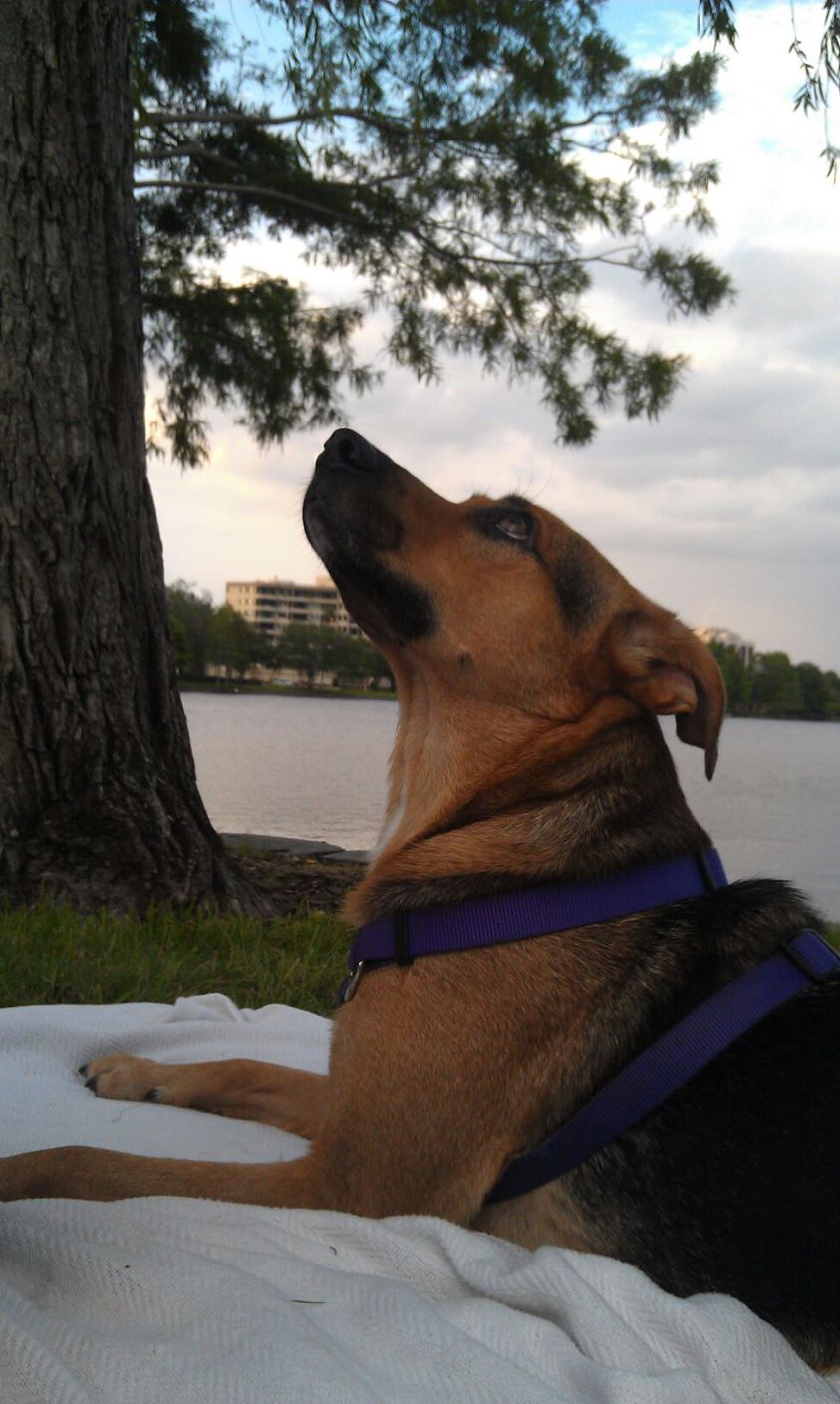Life and death with a no-good, grumpy dog
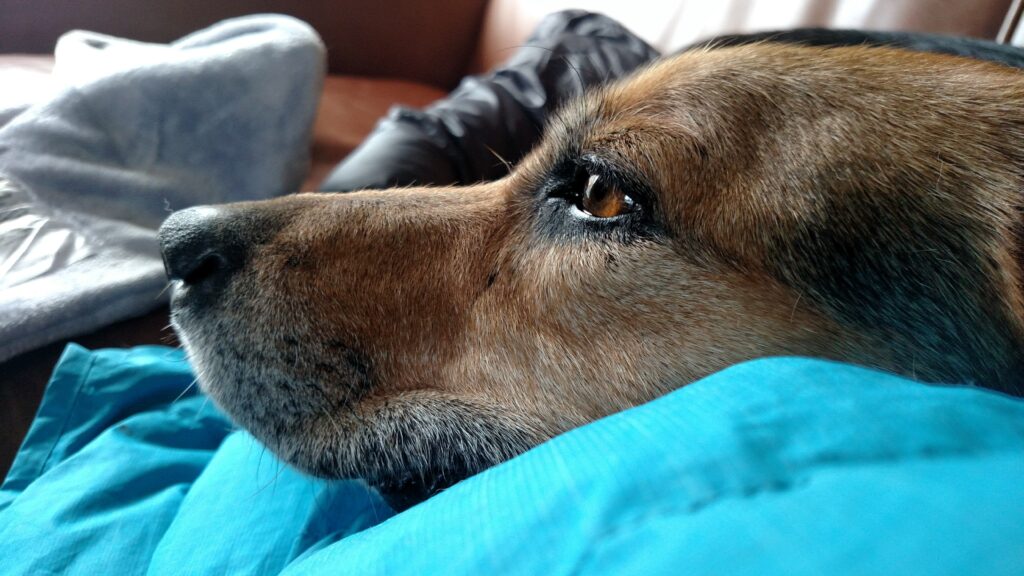
How many times have I drafted this obituary in my head? Sydney had been dying for years, or so it felt. If you’ve ever seen a dog age, you’ll know: Their death comes too slowly and entirely too fast, all at once.
The memorials I penned were full of humor and frankness. They captured Sydney’s essence perfectly: her aloofness that later turned to irritability, her tenacity of spirit, her stubborn-yet-sweet refusal to do anything other than what she wanted, to be anything other than what she was.
They were the words of someone whose dog died a good death, surrounded by loved ones, a hard but correct choice at the end of a gradual decline.
In writing, I would feel a sense of sadness, yes, but also one of relief. I would be ready and, more importantly, so would Sydney. Ending her life would be the humane choice, the only choice, and I would feel at peace with that decision.
I know death well. We’ve met before, many times. Both of my biological parents, all my grandparents, a cousin, a friend, a mentor, an editor; once, almost, myself.
I know death.
It doesn’t matter.
None of my familiarity has ever once lessened the pain of death — no matter how much I prepare, how many times I experience it, whether I see it coming or not. It’s as if I’d been watching a giant bird circle closer in the sky, only to have it pluck me right off the ground.
I have seen so many of life’s cruelties up close, but death remains the most painful, the most absurd, the most mundane and the cruelest thing to ever happen to me. In all my preparing and rationalizing and sincere belief that death is but a part of life, I seem to forget one simple truth: Life hurts.
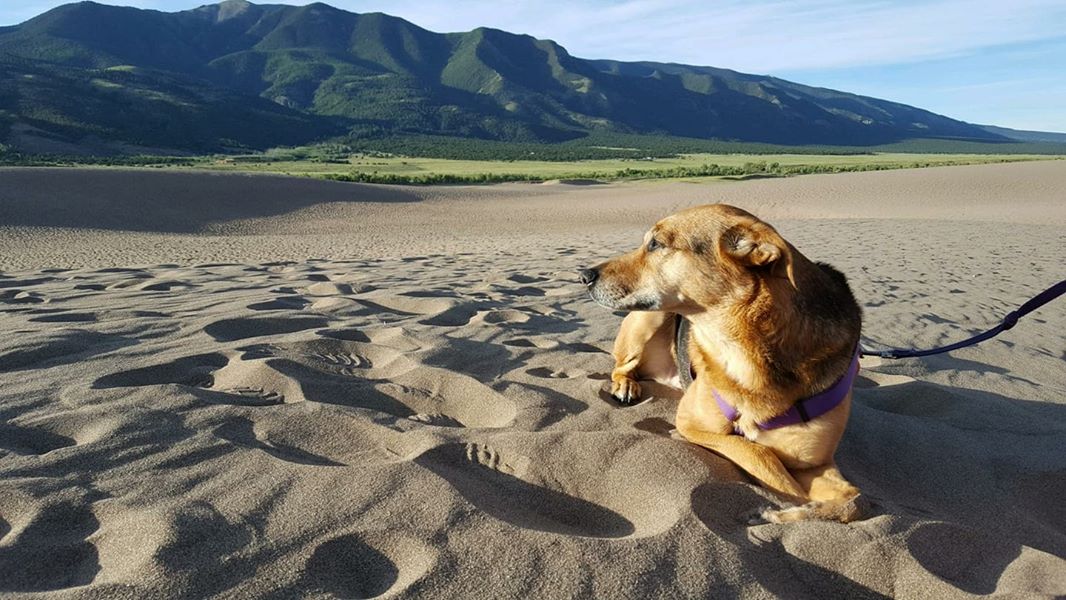
I.
There are platitudes people always offer when a pet dies. “She was a good dog” is the first.
Sydney wasn’t, not really. Sure, she was quiet, and a neat eater and drinker. She didn’t jump all over people when they came in the house, which I appreciated. She never chewed anything she shouldn’t or licked my face excessively. She traveled well. She was calm and gracious with children.
But the things you think of when you conjure the image of a dog? Sydney wasn’t those things.
Playful? Nope. She didn’t fetch, she wasn’t interested in toys.
A happy, wagging tail? Not really. It was a beautiful, classic German Shepherd tail, held high in what a trainer once told me was dominance, not joy.
Constantly by my side? Yes, but not in the puppy-trailing-after-you sort of way. “Stalked” is the most appropriate word for what Sydney did, following me through every room in the house. I always sensed she was plotting a coup, awaiting her chance to usurp my authority.
As for her attitude toward other dogs? L.M. Montgomery wrote (with necessary adjustments), her “paw was against every (dog) and every (dog’s) paw against” her.
Living with my housemate’s pup taught me how “bitch” evolved its current popular meaning. We went to the vet no fewer than a half dozen times to clean wounds they left on each other. I had to have abscesses drained, punctures patched. They both bore scars of their pitched battles.
Sydney was the fun police. If ever another mutt was enjoying itself too much, she would swoop in and put a stop to it. One of my many nicknames for her was Sydvicious.
She had a particular hatred for the old and weak, a true four-legged social Darwinian. The last time I ever took Sydney to the dog park, she kept eyes on an old, yellow-white fluffball the entire time. When she had grown bored of the area’s olfactory offerings, she turned her full attention to this luckless creature, hiding under a picnic table. The dog shifted. That was all the provocation Sydney needed: She pounced. The rest of the dogs at the park circled up, yapping the canine version of that old schoolyard chant “Fight! Fight! Fight!” Fur was flying everywhere. Sydney could not be contained; she’d tasted the flesh of her enemy and gone mad with bloodlust.
My companion, a regular at the bar I worked at, scooped her up in his arms, where she writhed and frothed. Shocked dog guardians stared at us as we beat a hasty retreat under their withering glares, Sydney struggling for freedom the entire way. We never went back. (The other dog was OK, in case you’re wondering, aside from a few chunks of missing fur.)
Sydney did not reserve her aggression for fellow canines. She bit numerous humans as well, including my late, elderly mother (who was very much alive at the time) and, once, a jogger’s prominent left ass cheek, mid-stride.
“Bite” is a strong word — Sydney was a shepherd, she had a herding instinct. Nothing and no one could move in our house without Syd’s attempts to corral it via sharp nips at the heels. She terrorized five successive roommates, all meek and quiet females. (Proving she was no woman-hater, Sydney once barred an HVAC man in my very small laundry room and refused to let him move. I had to leave work to free him.)
As she grew older, Sydney turned her teeth to softer and more accessible parts of the body: hands, arms, calves. She began chomping my housemate, whom she had known for 8 years, and, eventually, me. Truly, she raged against the dying of the light.
It wasn’t biting in the best sense of the word. She never clamped down — she snapped, her way of letting you know she was displeased with whatever was happening.
When I took her with me to my dad’s house, my nephews were deeply disappointed. They love dogs, but Sydney did not want to be pet. She did not want to play. She wanted two things: Your food, and to be left alone.
This was not a dog, my younger nephew moaned, it was a coyote.
I respected Sydney for her clear communication and boundary-setting. I never took it personally, as others seemed to. Her affection was hard-won but not nonexistent. It waned with age, but what can you expect from someone who is mostly deaf, partially blind, barely mobile and losing a slow war to skin cancer?
Sometimes, you’re just out of fucks to give.
 II.
II.
The other thing people say when a pet dies is, “She had a good life.” But did she?
I was not a great mom to Sydney. I was in my early 20s when I brought her home, a bartender in a tourist town before the recession. I had money to burn, and I burned it mostly on boozy nights out with friends.
In my quest to never be lonely, I left her alone far too often, for far too long.
I hadn’t yet dealt with the trauma of my youth. I was angry, a lot. I yelled too much and pet her too little — particularly after I moved from humid Florida to arid Colorado and developed an allergy to dogs. I couldn’t risk snuggles without hives, red eyes and a runny nose, though I often did.
I had selected Sydney for two reasons: I wanted an older dog and felt that I therefore should take whatever name it came with. I loved Australia during my time there, so Sydney it was.
What really sealed it is that I saw myself in her. She showed signs of being mistreated, flinching at sudden movements. The shelter staff told me it was likely she was abused. Her kennel card said she was found wandering on the street. She was surrendered by a couple because she jumped fences, they wrote, but I now suspect it was because she did not get along with their other dogs, and they wanted to spare her the almost certain death attached to a label of aggressive or dangerous.
When I went to greet her, Sydney was in the cage with a young, lively pit bull. Every time I extended my hand to touch her, it would jump in the way. After a few attempts, she gave up, took a couple steps back and looked at me from the tops of her eyes, almost rolling them, as if to say, “Do you see what I have to deal with here?”
From that moment, she was mine.
I was still naive enough to be looking for signs from the universe that I would be OK, that I could escape my very-much-present past and become a whole person. I convinced myself we could heal together, Sydney and me. That if she could get better, I could, too. It took me years to figure out I could not wait on anyone or anything to prove that I could heal. The only thing I could do was try. Sydney was a dog, not an oracle.
I did get better, eventually. Sydney did not, not really, which I will forever believe is my fault. Dogs are intensely in-tune animals, reflecting the personalities of their owners; I can see for myself how my housemate’s pup mirrors his own anxiety.
So what does it say about me that my dog was, to put it bluntly, kind of a bitch? Never trusting, always on alert, reserving her sweetness for a select few. With another owner, what could she have become? Would they have gotten a proper trainer to overcome her aggression? Would she have stopped cowering at raised hands and voices and started chasing Frisbees in the park? Would she have been that loveable, happy dog that everyone wants, a dog that would have delighted my nephews?
I can’t help but feel that the answer, at least to some extent, is yes. That far from helping her realize her potential, I prevented her from reaching it.
Still, her life wasn’t exactly bad. She got three walks a day and two meals. She once rolled in a maggoty shark on the beach and seemed to enjoy it. She took road trips, ate cheeseburgers and ice cream. She got steak on her birthday, turkey on Thanksgiving and a full stocking on Christmas. She stole all sorts of food from my roommates over the years, most recently an entire buttered English muffin and a plate of roasted grapes in sausage grease, having finally figured out at 14 how to climb onto the dining room table.
She had a warm bed to sleep in every night, patches of sunlight in which to nap. She climbed mountains.
For a one-time street dog from Orlando, I suppose it could have been worse.
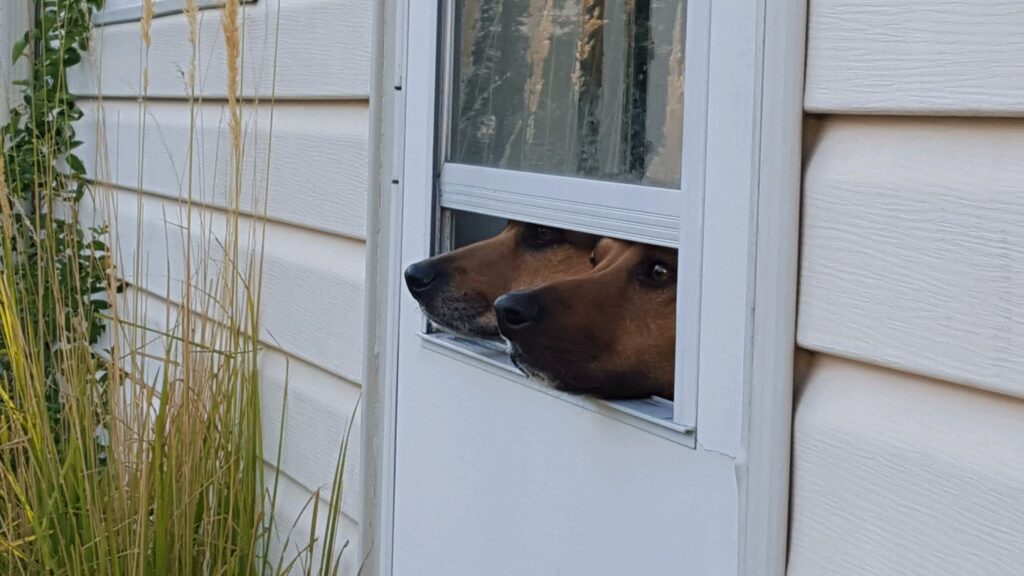 III.
III.
Old age began years ago for Sydney. She started greying around 8. By 10, I had to sign the senior dog waiver at the groomer’s, lest she fall off the table and break a hip.
It was around that time that Tumor Willis appeared, at first a small growth on her abdomen that, over the course of three years, bloomed into a shape and size not unlike a pair of human testicles. It was assumed to be a benign mammary gland tumor until it ruptured. The smell was something I can’t print in this publication, but forever changed the way I think about seafood.
It turned out to be skin cancer, so at 13 years of age, I put her through surgery. Recovery was hell, but on the plus side, they’d taken so much of her stomach skin that she got a tummy tuck thrown in for free. Like putting Kate Hudson’s abs on Betty White.
Her legs really started to go in the last two years. She became stiff and stooped, the toenails of her back feet dragging the ground until they were worn to nubs. She took near-daily tumbles down the stairs. I imagined that was how she would go, a broken leg that I wouldn’t bother getting repaired.
I prepared myself for her death by playing it over and over again in my head and constantly cracking jokes. I told everyone who would listen that she probably wouldn’t last the year. When my second roommate moved out and I relocated our bedroom downstairs to make it easier on Sydney, I declared that she would probably die soon after just to spite me. (In fact, it was a mere three weeks later. Well played, dog.)
Never having had an old dog, I never knew if this time was going to be the time, if a bad day was just the first of worse to come. It was impossible to estimate how much time she had left, to discern what was normal aging and what was a potentially fatal symptom. She developed a hacking cough that I was sure was due to heart failure, the consequence of a grain-free diet. I switched her food and the hack continued unabated for three years. Sydney had survived so much: At times I thought she would outlive us all, so I joked about that, too. She was one tough mother.
When the veterinary surgeon removed Tumor Willis, she was stunned by Sydney’s overall health. Are you sure this dog is 13? she asked. Aside from the cancer, she seemed a spry 8 or 9. (I’d had her for 11 years at that point, and she was fully grown when I got her, so she was at least 12.)
That felt particularly gratifying given all the snobby Boulderites who thought I was criminally negligent for my minimal-intervention style of parenting. To the Humane Society vet who sneeringly told me I should bring Sydney more often than when she was injured: Consider this my literary middle finger. The best revenge is a life well-lived.
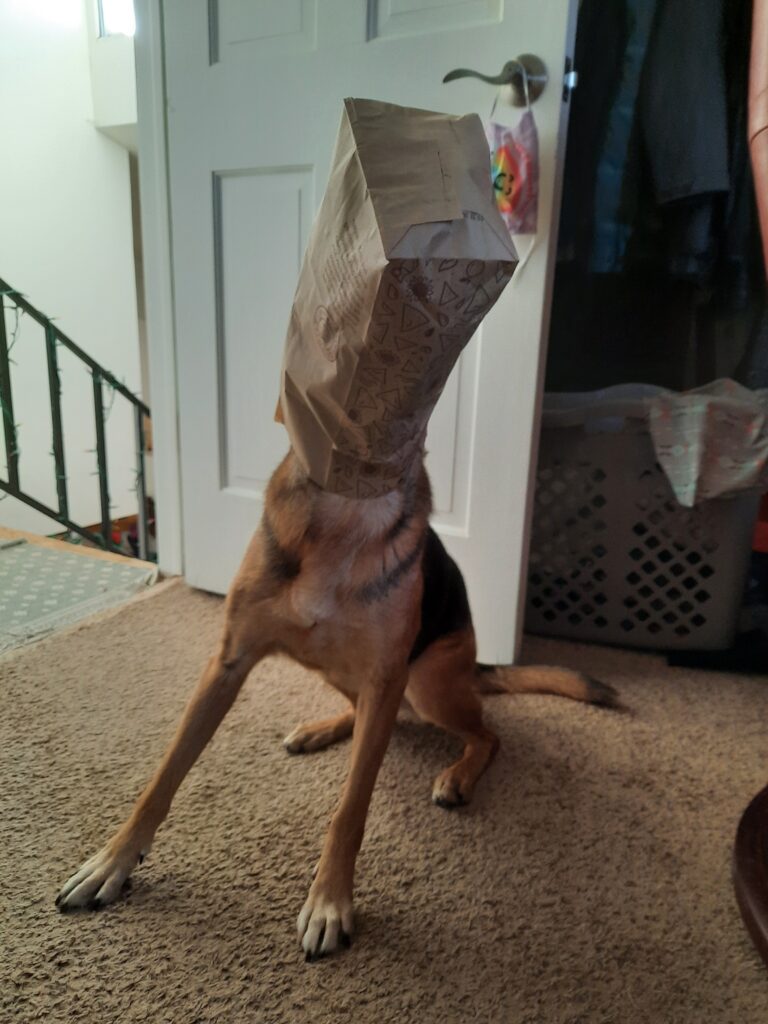
IV.
Given her prolonged deterioration, I had a lot of time to ruminate on Sydney’s eventual end. I always pictured it the same: An awake, alert Sydney, albeit in some pain. My long-time roomate there, possibly his dog. She would be tired but not scared. We would hold her, and hold hands over her body. I would be stroking her back, her tail, her ears, her face. She would drift off and we would cry, together.
Her death turned out to be not a calculated decision, but an emergent one. Two days after Christmas, Sydney began vomiting clear liquid and foam. Her stomach was distended with bloat — filling with gas and turning over on itself. Reversible through surgery, but not always successful.
Instead of the warm scene at our home or the vet, she was on the cold floor of an emergency clinic, too doped up to know who I was. She stared vacantly into my eyes as I soothed her. My roommate was out of town. There was no holding of hands over her broken body, no shared sadness. No goodbye from his dog, who had lived with Sydney for nearly her entire life.
Of course, when does death ever live up to the romanticized version we play out in our minds? My mother died 300 miles from home, in a hospital bed in a strange city, after 45 minutes of attempted resuscitation. There were no tearful farewells, no time to prepare. We hadn’t spoken in three years. Hers was the most significant death of my life. Before Sydney’s.
I am not comparing the death of my dog to that of my mother, or any human being. Especially in this year of so much loss. But with my mother, things were complicated. We interacted rarely, and it was always painful. When she died, I wasn’t mourning her presence in my life. I was mourning what should have been and what could possibly be. I was mourning a dream.
With Sydney, I am mourning a reality.
Sydney was my everyday. She was my literal reason to get out of bed. Every morning, she woke me to walk her. One of the things she loved best was being outside. Wherever we went, she always wanted to go farther, even if she could hardly walk. She was up for anything, would go anywhere. She was never afraid. I think she, like me, learned early on that the scariest thing in the world was humans and what they could do to you.
Together, we went to the ocean, up mountains, down alleyways. She rode on the front of my paddleboard, surveying the world.
She only fell off once — the first time. On a lake in Nebraska, during a solar eclipse, she lost her footing and slipped right over the edge. I wasn’t sure she was coming back up. Despite living in Florida, I’d never seen her swim: She was a wading dog only.
When I tell the story, I like to say I dove right in without a second’s hesitation. But in reality, I looked dumbfounded at my roommate on his board, with his dog. Calmly, he said, “Well, go in after her.”
I did, and Syd clung to me like a child as I swam her to safety. But she got back on the board, many times after, apparently none the worse for her brush with death.
It has been Sydney and I for 12 years. Most of them, I spent unpartnered, with no family. She was my companion; she was my family. Her death is the end of life as I have known it.
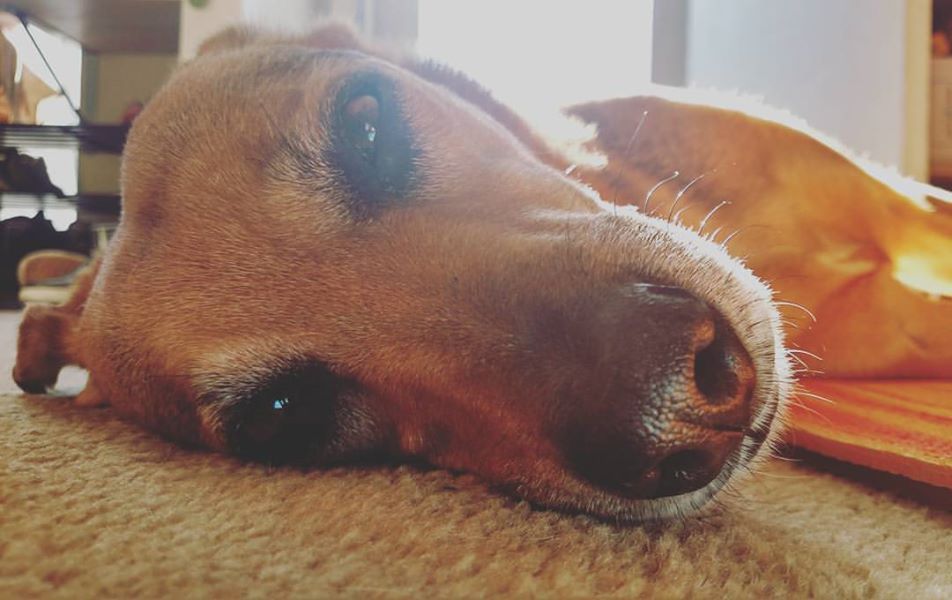 V.
V.
The most prominent theme in the many obituaries I mentally mapped out was all the things Sydney didn’t teach me.
I let Sydney be who she was, and what she was. I did not take any lessons from the way she lived her life; I take none now from her death.
Sydney was not always so ornery. In her younger days, she was incredibly empathic. She had a knack of knowing when someone in the vicinity was sad, and would present herself to be petted, resting her chin gingerly on your lap. I often posited that she would make an excellent therapy dog.
I never fooled myself that this level of attunement to my needs was anything other than nature, sharpened perhaps by nurture — or, rather, the lack thereof. Victims of child abuse learn to become hyper-aware of the moods of their caregivers as a means of staying safe. If they sense anger, they can jump into intervention mode or get the hell out of the way. I imagine it is no different for canines, who have been bred for centuries to be sensitive to human whims.
That impulse faded as Sydney aged. She either could no longer tell when I was hurting or no longer cared. I didn’t fool myself into thinking the latter was not distinctly possible.
Plenty of my friends who knew elder Sydney expressed polite admiration at her fierce reinforcement of her boundaries, of her refusal to perform the part of happy dog. It’s a popular concept these days, at least among the women I know, that once you get old, you won’t have to accommodate anyone but yourself. You can be as grumpy, as gripe-y, as get-off-my-lawn as you like, and the people who really know you will still love you. After all, you’ve earned it.
I don’t know that I aspire to Sydney’s level of misanthropy. Is that really a goal, to be so cantankerous that you (sometimes) exhaust the people caring for you and alienate everyone else? While I appreciate the sentiment, I hope I can age a little more gracefully.
Still, I’d rather be a crank like Sydney than a vapid cheerleader. Give me an ill-tempered mutt over a dopey labradoodle any day, rolling over for any old stranger’s hand and loving everybody. Sydney was discerning, I like to think; she chose me.
In reality, of course, I chose her. Her love for me was conditional upon being fed and snuggled and generally well-cared for. We may have had a deep connection, but it wasn’t pre-ordained by the cosmos. I picked her because she reminded me of myself, a human impulse, not — as far as I know — a canine one.
Nor do I think, now that she is gone, that I am resolved to live differently because of some wisdom she inspired. I don’t wish that I had loved her more, or better. I did the best job I could at the time, all things considered. I will miss our morning walks, for sure, but Sydney didn’t lead me to embrace the joy of the dawn. There were plenty of days I was actively annoyed by the tippy-tap of her nails on the hardwood floor at an hour much earlier than I’d like.
Her body in my bed, while warm and comfortable, was also absolutely immoveable and prone to being exactly where I wanted to be. And It will be nice to eat a piece of food without having to shoo her away. I’m not nostalgic for her every act.
I am resisting the urge to romanticize our life together. It was at times frustrating and tedious; at others, glorious and gay. I want to remember the way she used to stick her fuzzy butt in the air to be scratched, a literal downward facing dog. She would get so into it that she’d eventually flop over, the last step of her stop-motion summersault. But I also remember the times (plural) she fell out of the open car window and crapped all over my seat, or vomited on my just-washed bedding or (my personal favorite) peed on her sister’s head.
That is an accurate picture of our life together. Not a rose-tinted remembrance, but a realistic portrait. It might not be the pinnacle of profundity, but it means something to me that I loved Sydney, bites and all.
She was a dog. She was a good dog.
— Shay Castle, boulderbeatnews@gmail.com, @shayshinecastle
Published Jan. 2, 2021
